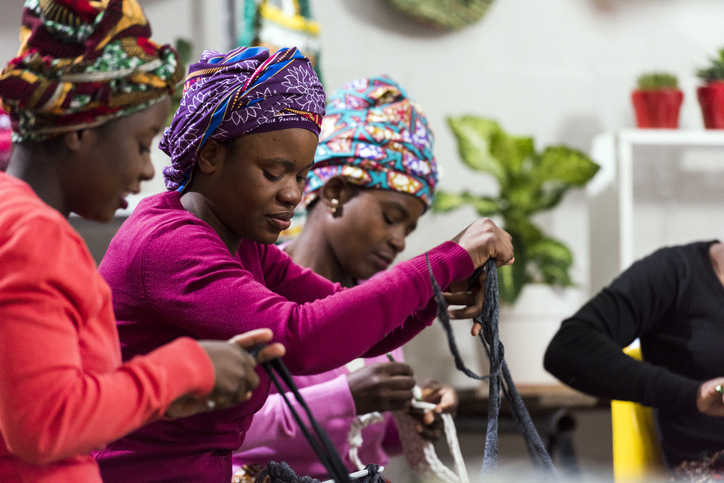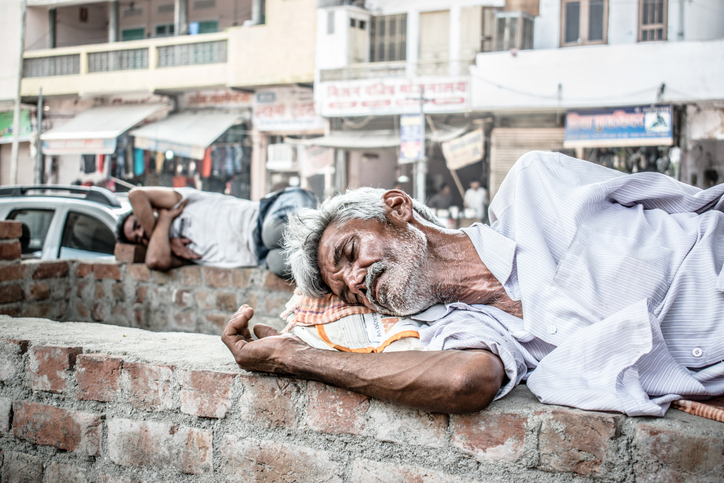As people in developing countries continue to crowd into megacities, sometimes as a result of climate-related migration, the risk of food insecurity among the urban poor is likely to grow. This column outlines the need for policies that reduce risk and build resilient urban food systems. Governments of megacities like Dhaka in Bangladesh need to consider how to integrate informal food systems, which can make food more accessible and affordable to low-income migrants.
The world is becoming increasingly urban. According to the United Nations Population Division, over 54% of the world’s population is in urban areas, with more than 10% living in megacities (those with 10 million or more inhabitants). Climate change will result in further migration, potentially of as many as 200 million people by 2050, according to a study by the Institute for Environment and Human Security of the United Nations University.
As a consequence of growing urbanization, the risk of food insecurity among the urban poor can be expected to grow. One of the main survival strategies of low-income migrants to urban areas is reliance on what development researchers call “informal food systems”. These will become a critical item on the policy agenda for global development in coming decades for a number of reasons.
First, climate-related migration will increasingly transform urban food provisioning systems and magnify the risks associated with food insecurity, exacerbating existing vulnerabilities and inequalities.
Second, informal food systems are emerging as a critical component in urban food provisioning for migrants. With a narrow range of livelihood strategies available to them, migrants are less prepared to cope with food-related shocks and value chain bottlenecks, compared with established residents, due to a lack of local knowledge, networks and assets. With a desire for greater autonomy and flexibility, migrants increasingly turn to informal food systems for their livelihood and food security needs.
Dhaka is a poster child for the complex interrelationship between climate-related migration and informal food systems in megacities. Dhaka is the world’s tenth-largest city with 16.8 million people living in an area of 325 square kilometers (which is more than 51,000 people per square kilometer).
Moreover, according to the Global Climate Risk Index, Bangladesh is ranked among the top six countries most affected by environmental hazards. Livelihoods and food security are extremely vulnerable to climate-related risks in Bangladesh, and migration is now the most frequently used coping strategy by those living in highly affected areas.
Large-scale rural to urban migration is one of the principal factors for rapid urban growth in the megacity of Dhaka. Half a million Bangladeshis move to the city every year, mainly from coastal and rural regions, and, as a result, food insecurity is shifting from rural to urban areas.
The rapid increase in migration in Dhaka is due to four main reasons:
- Rural migrants are seeking jobs in garment factories, construction and the informal economy.
- Environmental problems in southern Bangladesh (including rising sea levels, saline water intrusion, increased salinity in agriculture soils, scarcity of freshwater, and lower productivity of fisheries and freshwater prawn farms) are driving migrants from Barisal division to Dhaka.
- Seasonal migration from northwestern Bangladesh is rising due to rainfall variability, seasonal drought, and associated seasonal food insecurity and hunger known as “Monga”.
- Floods, cyclones and riverbank erosion stimulate occasional surges in migration from affected areas to Dhaka.
As a result, the number of people living in urban slums without access to basic services and amenities has increased by 60% since 2000. The informal food systems of Dhaka have become a dense and diverse network of informal markets, mobile traders, hawkers, retailers, street vendors, suppliers and transporters.
The informal sector operates mostly in public spaces, making food more accessible and affordable to low-income migrants. According to a study, 100,000 street vendors sell food in public spaces, providing a living for more than 400,000 people. Every second city dweller depends on these informal markets for their food procurement.
Dhaka is located in a flat deltaic plain where three large rivers converge (the Padma, the Bramhaputra and the Meghna). Climate-induced events, particularly monsoon floods, periodically disrupt the formal food supply chain, causing production shortfalls and blocking transport routes. Informal food systems are more resilient and nimble than the formal food system, and keep the megacity running during disasters.
Surprisingly, although food security is a key item in the Bangladesh government’s development agenda, it seems that informal food systems are not wanted by the authorities. Evictions and violence against informal food networks by the law enforcement agencies and local authorities is an everyday occurrence in Dhaka. Current policies do not address informality in the “mega-urban” food system.
This needs to change. Food security in megacities is different from that of rural areas or smaller centres, and must be approached through a different set of policies that reduce risk and build resilient urban food systems, with informal provisioning being acknowledged as part of the solution. Governments of megacities everywhere (not just Dhaka) therefore need to consider how to integrate informal food systems into the urban food system.
We need to have a wider debate and policy discussion on a number of key issues:
- The extent to which climate-related migration is transforming the mega-urban informal food system.
- How migrants are coping with food insecurity and how they are organized around informal food systems.
- The policies and guidelines that exist at the city, regional, national and international level that aim to strengthen informal food systems.
- The issues that drive food security urban governance, and how the informal food system fits into local urban government food security approaches.
The sooner we have answers to these questions, the better the chance we can make megacities more resilient to the combined impacts of climate change and rapid population growth.






